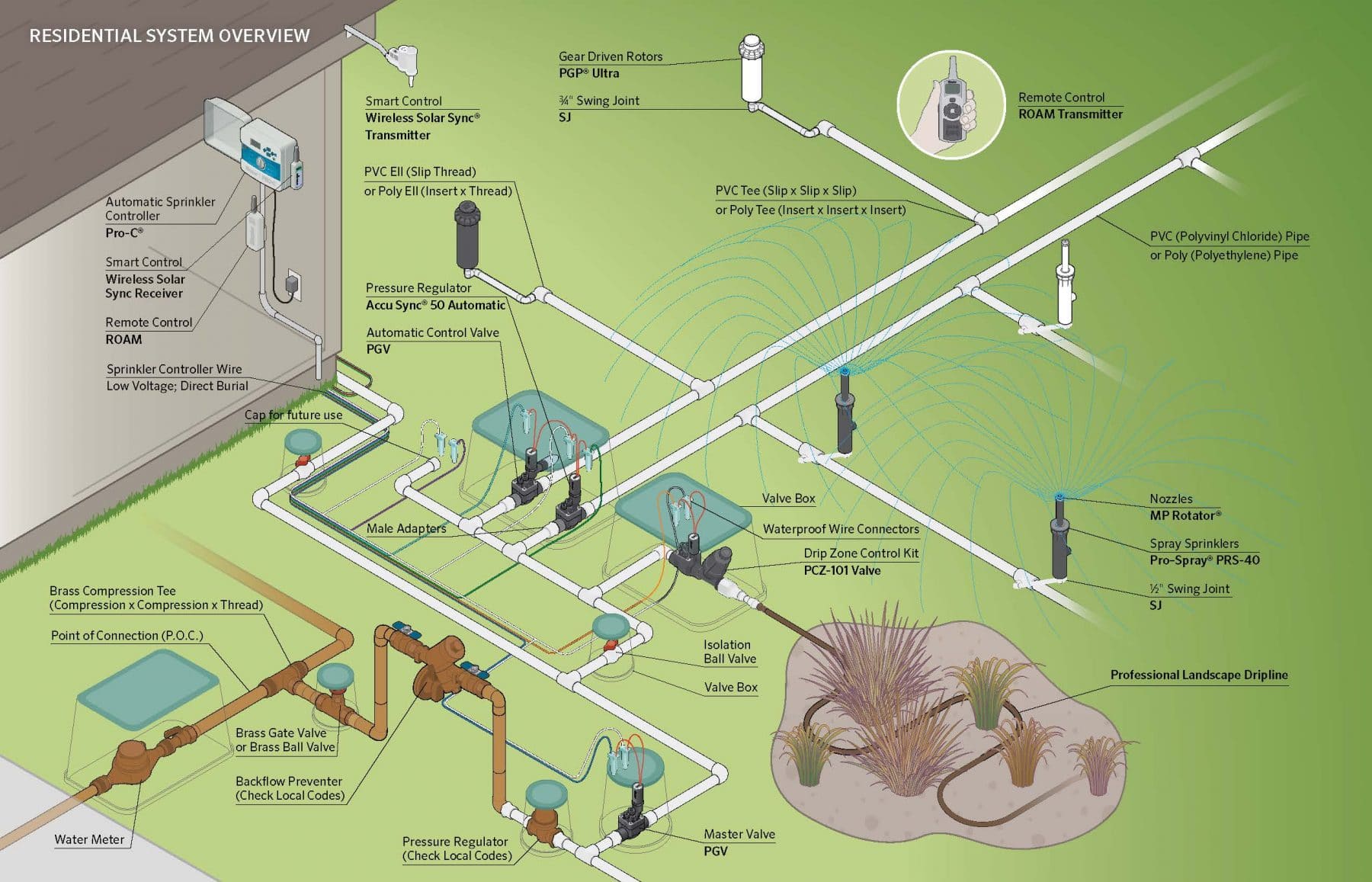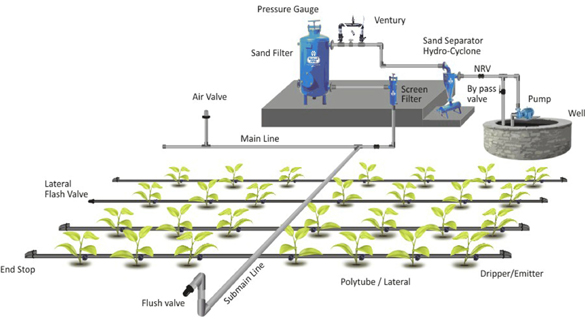Importance of Integrating Renewable Energy Systems The integration of renewable energy systems in Mechanical, Electrical, and Plumbing (MEP) design has

Introduction
The use of irrigation systems for agricultural production is one of the major uses of water worldwide. Unfortunately, the water demand seems to be exceeding supply, especially as the world population continues to grow.
According to the US Department of Agriculture, about 80 percent of water in the country is used in irrigation systems for agricultural production. Unfortunately, the usage of water in these irrigation systems is highly inefficient. Besides, there is a considerable amount of water loss through evapotranspiration and runoff.
So, as the water and food demand continues to increase, the irrigation sector should focus on increasing water use efficiency and optimizing water usage. Designing efficient irrigation systems will help to cut costs and conserve water in various agricultural sectors. More notably, this will help growers cut the cost of fertilizers, pumping, and water. While increasing the crop yield and producing higher soil quality.
In this guide, we’ll show you various efficient irrigation design systems that will help growers save money and conserve water.

Design methods & technologies for efficient irrigation systems
In essence, crops require different water amounts during different phases of their growth. For that reason, proper irrigation scheduling is needed to eliminate energy waste, prevent water wastage, and optimize yield. Besides, it’s one of the most essential Best Management Practices for efficient irrigation management.
Irrigation scheduling can either be based on timely estimations or measurements of crop water needs and soil moisture levels. Thankfully, there are various techniques, computer aides, and devices that can help growers to determine how much water is needed and when it’s required.
In addition, irrigation scheduling utilizes a selected strategy of water management to maximize net return, while preventing over-application of water. Generally speaking, almost all irrigation systems are scheduled, whether by ditch water availability, computer-controlled systems, or just the grower’s hunch.
For instance, experienced irrigators know how much time it takes for the irrigation systems to get water across the entire field. Nonetheless, it’s important to track and measure the soil moisture content & water capacity, weather, and water demand during various growth cycles.
As we mentioned earlier, the increase in population growth and water needs impacts water supply. For that, it’s important to look for alternative water sources to ensure sustainability and efficiency in irrigation systems.
As an example, areas with short heavy rainfall seasons and long dry periods can consider harvesting rainwater. That way, rainwater can be collected during the rainy seasons, stored in ponds, and extracted for irrigation.
Other efficient alternatives include; desalination of brackish water and reuse of treated wastewater. However, in these scenarios, you’ll need an efficient filtration system that will get rid of any pollutants in the water before it’s directed into an irrigation system.
The main role of an irrigation system design is to distribute water from the source to crops across the field. That said, the way irrigators water their crops will have a considerable impact on water efficiency. In general, it’s important to identify the best irrigation system for a specific situation. However, that option will be influenced by various factors such as required flow rate, cost, soil type, plant type, landscape characteristics, and operating pressure.
All in all, the major types of irrigation methods include; drip, sprinkler, and surface irrigation.
Surprisingly, surface irrigation is the most inefficient method, yet it’s the most commonly used technique. Specifically, its plant absorption rate is less than 10% and it involves flooding an entire field or small strips in the field.
In sprinkler irrigation systems, rotating or fixed heads are used to spray pumped water onto a field. More importantly, its efficiency rate is more than 90% and it saves energy costs by around 20-50 percent. However, despite being more efficient than surface irrigation, it’s expensive due to the pressure requirement.
Finally, drip systems consist of pressurized pipes that push water to the crops below or on the ground surface. For that, water is directed directly to the root, giving them an efficiency rate of up to 100% water efficient. At the same time, they deliver water savings of up to 40 – 80 percent than conventional systems,
Another innovative method you can use to enhance watering efficiency is handling soil in a manner that optimizes water use. Here, you can use methods like; furrow diking and water distribution systems. Also, you can use residue management to reduce evaporation and field leveling to ensure uniform water distribution and avoid a runoff.
Plant types play a significant role in determining the type of irrigation system design to use on the field. Also, irrigation requirements tend to differ based on the growth stage of the plant. More importantly, the growing period and water needs of a crop vary depending on the environment. That’s the main reason why irrigators have different water usage across the globe.
Still, on plant type, the market value of a crop will affect the feasibility of a more costly irrigation system. For that, you should consider planting crops that provide higher value but need less water. That is because such crops may offer greater investment in irrigation systems compared to lower-value crops.
Finally, you can increase the water use efficiency of your irrigation system by installing filtration systems. These systems will prevent your irrigation system design from getting clogged, helping you conserve water. Moreover, this will save time and minimize labor as well as costs.
While choosing a filtration system, make sure you consider the irrigation method and specific watering conditions. That said, the most common types of filters in irrigation system design are; sand, disc, and screen media.
Conclusion
Bottom line, optimizing your irrigation system will help you conserve water and ensure efficient water use. As a result, you’ll end up saving water, time as well as money.
If you want to design an efficient irrigation system in California, contact Innodez Design & Engineering. Our irrigation designs will help you create an appropriate irrigation schedule to ensure you achieve desired results.
About Author
InnoDez